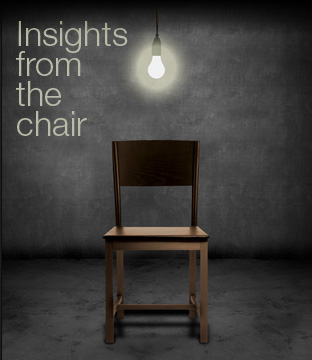The Rise of the Production Agency
 Decoupling production is not a new concept in marketing circles. Historically, the view was that clients could control cost, service levels and output by forming independent relationships with production partners, outside the control of their “master” or lead creative agency.
Decoupling production is not a new concept in marketing circles. Historically, the view was that clients could control cost, service levels and output by forming independent relationships with production partners, outside the control of their “master” or lead creative agency.
This model allowed the lead agency to control strategy, creative platform and concept, while the production agency focused on the “churn and burn” pieces. It was the original “conscious uncoupling.”
Recently, Enth Degree has noticed a trend whereby production or design agencies have been encroaching, for want of a better word, on the territory once held solely by the creative agency. By this I mean that clients have been utilising the creative agency for creative messaging and ultimately master artwork (often only to a simple poster artwork file) before handing over the work to the production supplier for implementation in all channels and formats. We have found that production partners have improved their art direction, copyrighting and design skills to the point that they are now a viable competitor to the once sacrosanct creative team.
So, the question now turns to whether this is a positive trend. Obviously the production partner will argue that they can implement the creative concept at a lower cost than that proposed by the creative agency and in turn generate much needed savings for the client. We have found that in a number of instances, this is in fact the case. However, we have also come across instances where the creative agency is actually able to implement at a competitive cost provided they are briefed correctly with clear creative collateral expectations. A simple head hour comparison is not effective here; instead a closer look at total development costs is needed to ascertain proper value.
Often the reason why production partners claim to be able to operate so cost effectively is the technology platform utilised internally. Clients often have access to these platforms as well and can brief directly to “the cloud” when necessary. These systems can either allow the client to change collateral pieces for themselves, or send the work off into Neverland to be completed by a magical group of workers that will never see the light of day (read: overseas). These systems can work quite well, but it is easy for a client to be dazzled by cost savings only for the reality of having automated responses that fall short of the desired result. Even if this is not the case and you are speaking to a real life production team, the issue of dual account management resources becomes apparent. Are the savings generated really worth having two sets of Account Directors, Managers, Executives et al?
So what should clients do? What is the best structure? The truth is there is no perfect approach. Both creative and production partners have their role and the key to engaging them effectively is to have an understanding of what you need now, in six months’ time, in two years’ time and so on. Consider how media channels may change and evolve, and ask whether the production partner will be able to keep up in comparison to your current creative partner. What if your brand suddenly needs to activate an urgent campaign? Is it not better to have a creative partner that you trust to help when required?
Essentially we recommend that clients take a long sighted approach when structuring their agency relationships with the aim of striking a workable, sustainable, and efficient balance between partners, allowing for certainty but also nimbleness when required.
Please get in touch if you think you need some assistance in working out the right balance for your brand.

